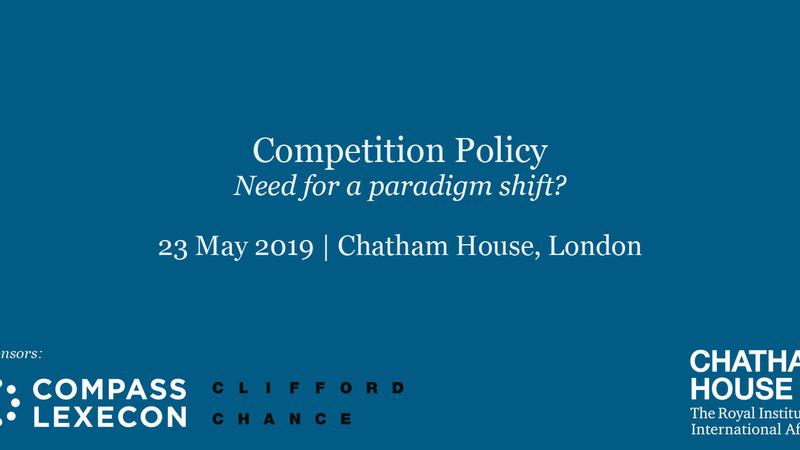How Will Merger Control Adapt to Recent Challenges?

Share
Article by David Sevy, Executive Vice President at Compass Lexecon in Paris, originally published by Financier Worldwide Magazine.
Obtaining clearance by competition agencies is a crucial step in many merger cases. Merger control matters for firms, as it matters for public policy. Mergers can benefit consumers, increasing innovation and reducing costs and prices; they can also adversely affect competition to consumers’ detriment. Competition agencies need to assess this in their merger reviews. How competition agencies apply control is changing.
In part, they seek to respond to new challenges, thrown up by the pandemic and its economic repercussions. They also aim to address trends that already existed and will continue – not least, the expansion of digital markets – as well as to redress past defects. Below are some views on how we should expect merger control to adapt to those trends.
What were the main trends in merger control before the pandemic?
Since the middle of the last decade, in the US especially, concerns grew that a relatively lenient stance toward mergers had led to less robust competition in a number of sectors, harming consumers. These concerns obviously related to digital markets, in which ‘Big Techs’ purchased hundreds of companies without being subject to reviews and were not significantly challenged when their deals were scrutinised. But concerns also arose about several other sectors, in which competition agencies did not or could not successfully challenge a series of mergers or failed to implement an aggressive antitrust policy.
By contrast, the European Commission (EC) was perceived to maintain a comparatively stringent merger control policy. Some decisions in Europe have been depicted as excessively harsh, particularly toward mergers between European firms in global markets where these could face competition by non-European ‘champions’. As well as maintaining a high threshold, the EC extended the range of theories of harm it relied upon – for instance seeking extensive divestiture remedies in mergers that could otherwise negatively affect innovation – thus going well beyond their traditional concern for consumer prices. Even so, digital mergers largely remained out of their control.
This contrast was not a result of differences in analytical approaches in America and Europe. The economic framework within which mergers are assessed and the methods used have become relatively similar across these (and other) jurisdictions. The approach for assessing mergers in the US and the EU has been gradually converging, for example with EU merger control proceedings now giving growing importance to documentary evidence.
Therefore, competition agencies’ policy agenda, and not solely their analytical approach, appears to influence how stringently they apply merger control, and the way they use it to preserve or foster competition.
What are the changes brought by the pandemic and the resulting recession?
The pandemic and accompanying recession are triggering structural changes in a number of sectors, with a lasting but not yet fully understood impact on both the supply and the demand sides.
This certainly introduces challenges to the substantive review of mergers in those sectors. It becomes more difficult to assess the potential impact of a merger – as counterfactuals (i.e., how market structure and competition would evolve absent the merger) and merger-specific effects are harder to pinpoint in sectors where recovery is uncertain, and shakeouts are expected (if not already happening).
Whether and how competition authorities adapt to this new challenge remains to be seen. A first, casual observation is that the EC or national competition authorities in Europe do not appear to have changed their framework for scrutinizing mergers. There is no sign of merger reviews being conducted under a different standard because of the current situation.
However, there are two areas of merger reviews that, while arguably neglected in most agencies’ usual practice, would warrant more consideration in the current economic environment. The first is efficiencies, since a more challenging environment will encourage many mergers to search for a more efficient organization of production and supply. The second is failing firm arguments, as those may capture important insights into what the future may look like absent any merger, as the competitive constraint exerted by some firms would weaken as they fall into hardship.
Both areas relate to the fact that, in many sectors, the market will evolve in a manner that encourages concentration. In part, this is due to the recession – as it will weaken inefficient firms and trigger market exit – but it is also due to structural changes in how businesses compete and operate – reacting to durable reductions in demand and the impact of increasing digitalization.
More stringent control of the digital sector
Many expert reports on competition in digital sectors have been published in the last 18 months. All highlighted the need for a more stringent approach to merger control in digital sectors, in consideration of the many factors – including strong network effects, extreme scale and scope economies, data-based services and powerful exclusionary strategies – that maintain high levels of concentration, cause market tipping and allow ‘gatekeepers’ to maintain preeminent positions.
What would a more stringent merger control look like?
First, a seemingly trivial but nonetheless important priority is simply that mergers involving gatekeepers should be subject to merger control reviews. In Europe, revamped referral systems and adaptations of merger review metrics and thresholds have been either implemented or discussed so that those mergers are caught in the agencies’ nets.
Second, expert reports have recommended that competition agencies put forward more adventurous theories of harm, regarding conglomerate strategies especially. This recognizes that digital sectors bring new challenges and risks, which traditional theories of harm and anticompetitive scenarios may not fully capture.
Third, experts recommended that competition agencies be more assertive regarding the harm mergers could cause, under the premise that so far these agencies may have erred on the side of underenforcement. Some scholars have even argued for a rebuttable presumption that digital mergers would be anticompetitive unless parties can come up with a cogent efficiency story.
It is therefore expected that acquisitions by digital giants will be intensely scrutinized. Some of those acquisitions may even be prohibited, but that is not necessarily so, for a couple of reasons outlined below.
First, digital platforms usually bring efficiencies, for example by enabling matchmaking between different groups of users or favoring one-stop shopping. One should expect efficiency arguments to play a significant role in the rationale of digital mergers and in their assessment. In some circumstances, the pro-competitive effects of certain digital mergers may be recognized.
Second, clearance may require demanding remedies, as this is an important mechanism that agencies can use to shape competitive conditions in a sector of the economy. Given the specificities of competition in digital sectors, behavioral remedies are likely to play a significant role, in contrast with the usual prominence that agencies give to structural remedies (e.g., asset divestments) in merger control. Access to input, such as data as well as the prohibition of specific conduct, could become part of the standard ‘remedy toolbox’ in digital mergers. This would be consistent with the ‘ex-ante’ regulation package that the EC will seek to introduce, with an aim to regulate the conduct of digital gatekeepers.
It must, however, be stressed that invigorating merger control is only one aspect of a more interventionist competition policy in the digital sector, as it will be supplemented by several other tools (antitrust, ex-ante regulation and a new competition tool). Hence, how instrumental merger reviews will be in shaping competition in the digital sector is not yet clear.
Spill over to the assessment of mergers in other sectors
A more interventionist approach to merger control in the digital sector will likely spill over to other sectors, in different ways.
First, the digitalization of the economy means that other sectors will increasingly exhibit some of the characteristics that feature in digital markets. If, therefore, those sectors gain a stronger propensity for concentration, harnessed by network effects, economies of scale and returns to data stockpiling, then agencies may heighten their scrutiny, in line with the lessons they draw from digital merger reviews.
Second, if competition agencies become braver at tackling new theories of harm, challenging more conglomerate mergers, they will enhance the toolkit and decisional practice at their disposal. Having developed those tools, they would be more likely to apply them in other sectors too, either because they identify similarities, or more broadly, for the mere sake of internal consistency; it would not be easy for competition agencies to adopt an aggressive stance in digital sectors while being seemingly lenient in others.
Third, if efficiencies and behavioral remedies become more common in digital mergers, they may gain more traction when agencies assess mergers in other sectors as well. At present, efficiency arguments have been, at best, received with skepticism in many merger reviews. Post-pandemic, these arguments could be very topical in sectors undertaking significant restructuring following a sharp decline in demand or structural changes in their service offering. Similarly, competition agencies have ruled out behavioral remedies in many instances, given their preference for structural remedies. This conventional wisdom may be revisited if behavioral remedies prove effective in the digital sector.
What role for economics going forward?
So, we should expect agencies to be stringent, and that applying control will be challenging. Assessing mergers and their possible effects has always been challenging; even more so now that agencies must adapt to a changing and a more complex environment, and they can retrieve massive stacks of data and countless internal documents. Obviously, extensive data provide the opportunity to understand how markets function, decipher firms’ strategies and business models, and stress-test theories of harm. But the accumulation of data and sources of evidence also sets the ground for confusion and conflicting interpretations.
What economics brings to merger reviews are frameworks and tools that cut through complexity, organize the evidence, and set out some hierarchy in assessing effects to balance them properly. This is nothing new, but it becomes even more relevant to assess new business models and take advantage of available data. Relevant analytical tools and empirical techniques are available. Notwithstanding necessary clarifications on how these should play in the decision process (as the recent General Court judgment in CK Telecoms UK Investments v. Commission (T-399/16) has put to the foreground), they are there to stay, ensuring merger assessments will raise the right questions in the right way.
Lastly, at times of deep structural changes in the economy, it remains highly commendable from a public policy perspective to retain a sound economic assessment of mergers, that properly balances their effects on competition in its different dimensions – be it price, privacy or innovation.


